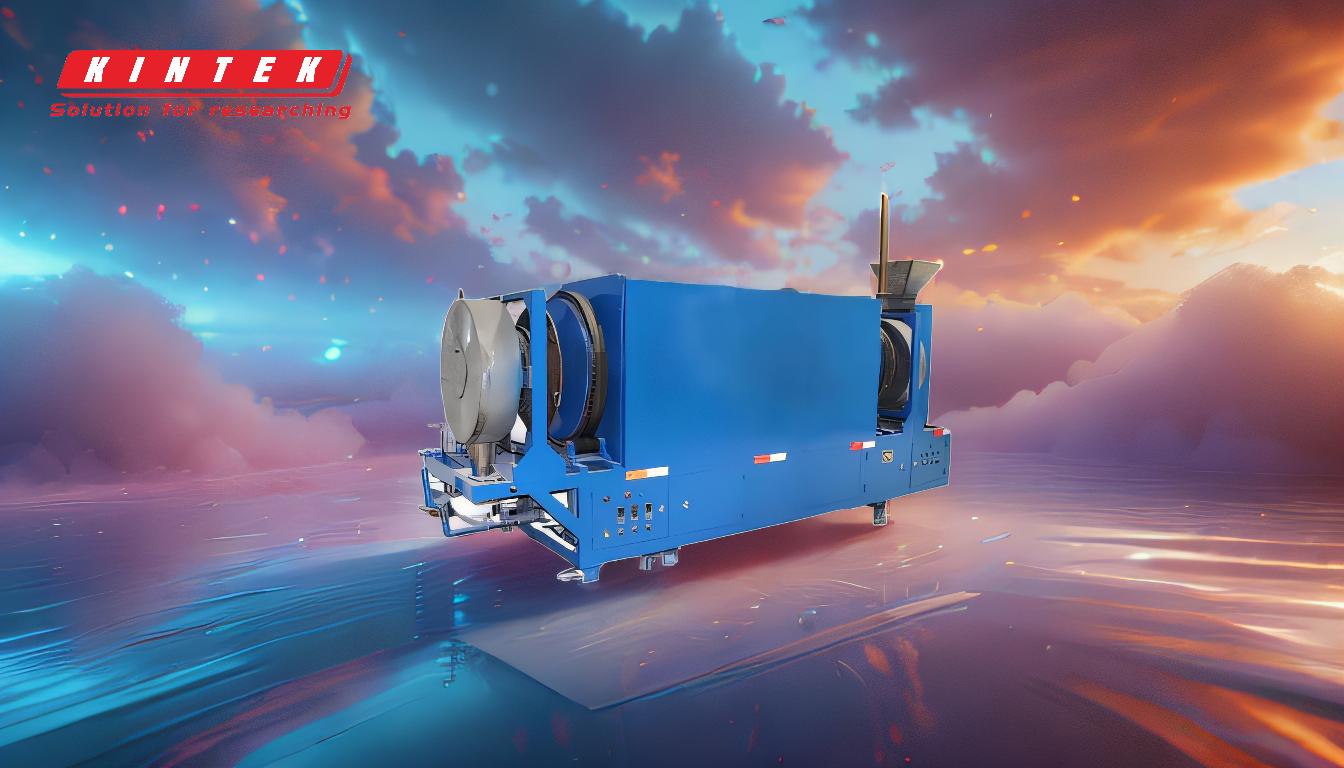Pyrolysis is a thermal decomposition process that occurs when wood is heated in the absence of oxygen. During pyrolysis, wood undergoes a series of physical and chemical transformations, leading to the production of solid, liquid, and gaseous products. The process begins with the removal of moisture, followed by the breakdown of organic compounds at higher temperatures, resulting in the formation of charcoal, pyrolysis oil, and syngas. The specific outcomes depend on factors such as temperature and the presence or absence of oxygen. Below is a detailed explanation of the key stages and products of wood pyrolysis.
Key Points Explained:

-
Moisture Removal
- Process: When wood is initially heated, the first stage involves the evaporation of moisture. This occurs at relatively low temperatures (below 100°C or 212°F).
- Outcome: The wood becomes dry, preparing it for further thermal decomposition.
-
Thermal Decomposition (270°C and Above)
- Process: Once the wood is dry, heating it to temperatures above 270°C (518°F) in the absence of oxygen triggers spontaneous decomposition. This stage is characterized by the breakdown of complex organic molecules such as cellulose, hemicellulose, and lignin.
- Outcome: The wood begins to shrink, crack, and change color, turning black as charring occurs.
-
Charcoal Formation
- Process: As the temperature continues to rise, the wood undergoes carbonization, a process where volatile compounds are released, leaving behind a solid residue primarily composed of carbon.
- Outcome: The solid residue is charcoal, which remains relatively cool until outgassing (the release of gases) nearly stops.
-
Outgassing and Flame Production
- Process: During pyrolysis, the release of volatile gases (outgassing) occurs. If a flame is present, these gases can ignite, producing additional flames.
- Outcome: The combustion of these gases results in a faint blue-violet flame, indicating the presence of carbon molecules vaporizing and combining with oxygen.
-
Final Oxidation
- Process: When all carbon in the wood is oxidized, the process reaches its final stage.
- Outcome: A small quantity of whitish ash remains as the end product.
-
Products of Pyrolysis
- Solid Residue (Charcoal): Composed mainly of carbon, charcoal is a valuable product used for fuel, filtration, and other industrial applications.
- Liquid (Pyrolysis Oil): A complex mixture of organic compounds, pyrolysis oil can be refined into biofuels or used as a chemical feedstock.
- Gas (Syngas): A mixture of hydrogen, carbon monoxide, and other gases, syngas can be used as a fuel or converted into chemicals.
-
Factors Influencing Pyrolysis
- Temperature: Higher temperatures (300–900°C) favor the production of liquid and gaseous components.
- Oxygen Presence: In the absence of oxygen, pyrolysis leads to carbonization and the formation of charcoal. If oxygen is present, combustion occurs, resulting in ash.
-
Applications of Pyrolysis Products
- Charcoal: Used for cooking, heating, and industrial processes.
- Pyrolysis Oil: Can be refined into transportation fuels or used as a renewable chemical feedstock.
- Syngas: Utilized in power generation or as a precursor for synthetic fuels and chemicals.
By understanding the stages and outcomes of wood pyrolysis, one can optimize the process to produce desired products for various applications, ranging from energy production to industrial uses.
Summary Table:
| Stage | Process | Outcome |
|---|---|---|
| Moisture Removal | Evaporation of moisture at low temperatures (<100°C). | Wood becomes dry, ready for decomposition. |
| Thermal Decomposition | Breakdown of organic compounds at >270°C in the absence of oxygen. | Wood shrinks, cracks, and turns black as charring occurs. |
| Charcoal Formation | Carbonization releases volatile compounds, leaving solid carbon residue. | Charcoal forms and remains cool until outgassing nearly stops. |
| Outgassing | Release of volatile gases; may ignite if a flame is present. | Produces a faint blue-violet flame as carbon molecules vaporize. |
| Final Oxidation | Oxidation of remaining carbon. | Whitish ash remains as the final product. |
| Products | Charcoal, pyrolysis oil, and syngas. | Used for fuel, biofuels, and chemical feedstocks. |
Discover how wood pyrolysis can benefit your energy or industrial processes—contact us today!










